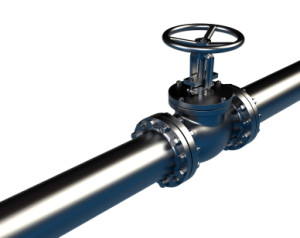by Glen Springer | Aug 27, 2013
This is part two of a four-part blog series discussing the six “types” of B2B buyer personas that occupy the digital space. We also offer some practical tips on how to adapt your sales and marketing strategies to make it easier for your buyer to receive the correct messaging at the correct time.
Part one of this blog series talked about how buyers have changed dramatically with the increased capabilities and use of the internet and web-based technologies. We will now look at the six new buyer types or personas in the B2B space today.

Different Buyer Personas
The Window Shopper
The first type of buyer personas thrives in the freedom inherent to the internet. She is spontaneous, flexible, impulsive and easily distracted. Unlike her pre-internet predecessor who had to methodically preplan B2B purchases using limited resources, today’s B2B buyer can float in and out of the buying cycle as she chooses.
No longer inhibited by a temporally structured and linear buying cycle with a predetermined result, the window shopper can take herself through the buying cycle at her own pace. She may see something she cannot live without and buy almost immediately. Or, she may take her team through nearly the entire sales process and then get distracted by a more pressing business issue.
The flighty and spontaneous nature of the window shopper can be frustrating for B2B salesmen trying to build momentum toward a sale. The important thing to remember when selling to a window shopper is, even though she may not be following the normal timeline of your buying process, there are still certain stages she needs to move through (pain, discovery, evaluation of alternatives, purchase, repurchase). These stages can be mapped to many different buyer personas for effectiveness.
This is a situation where marketing automation can be of great value. By creating digital content to match each stage of the buying process and then monitoring engagement with that content using marketing automation, you can intuitively understand where each prospect is in the buying cycle, despite the unpredictable timeline. Once you understand more about where each prospect is at, you can try to guide the window shopper’s impulses to the next stage by creating a sense of importance in your marketing content to accelerate the purchase.
 The Device Queen
The Device Queen
The next type of buyer is the uber-connected technology addict. She has a MacBook, a desktop, an iPhone, a Kindle and an iPad. She has apps set up on all of them to give her instant updates on the things she’s interested in. She’s tweeted twice and read three blog posts since I started writing this paragraph.
In the digital space, you’ll find the device queen everywhere. She’ll be on a mobile app one moment and her desktop the next, going wherever her next whim takes her. In order to sell to this person, you need to be everywhere she is. This means you need to be able to engage with her on her phone, computers and tablets.
The first step in doing this is making sure all of your marketing content is compatible with mobile devices. While it may not make sense to invest in building your own mobile app, it is pretty simple to make sure your graphics, videos and text are in formats that can be easily viewed on all mobile devices. The second step in engaging with a device queen is to offer many different options for consuming the same content. Sometimes she will feel like watching a 30-minute webcast on her desktop, but other times she would rather have a quick, mobile summary in 140 characters or less. Offer her both, and then make sure she can find the information on search engines as easily as possible through intelligent SEO optimization.
For the next part of this blog series profiling the second two buyer personas, click here.
If you would like more educational content on how integrating insights about your buyers with marketing automation can affect your sales, click here. To learn more about the sales and marketing outsourcing services we offer (including marketing automation implementation, content development and lead nurturing), you can check out our services page. If you are interested in a free review of your sales cycle, you can request one here.
by Glen Springer | Aug 26, 2013
If you’ve been reading blogs about B2B sales and marketing, you’ve likely heard that “the buyer now controls the sales process.” The statement is repeated often because it’s true, and a failure to incorporate this truth into your sales strategy will cause you to lose customers to your competitors.
The buyer’s new power is a result of the internet and internet-based technologies. Whereas going through a list of vendors from an industry magazine or browsing booths at a trade show used to be how your B2B buyer found you, the buyer now has many more resources available to help them make purchasing decisions.
Buyers now get their information in the form of digital articles, blog posts, tweets, Facebook posts, YouTube videos, Instagram pictures, webcasts, etc. This increasing interaction with digital information on a mass level has not only affected the economic structure of business, but the sociological one as well.
As the buying process changed with the introduction of web-based technologies, buyers changed too. Buyers adapted new traits and behaviors conducive to the new digital space they occupy. By understanding these new traits or characteristics and incorporating these insights into your sales strategies, you can make better connections, earn more trust and ultimately, close more deals.
We have a strong belief that more and more B2B products are “Bought” then “Sold”. The habits of buyers are now proving that the buyer wants to feel like they are in control of their education and early stage buying process. Once they have short listed and “bought,” they are much more open to being “sold” by your closer. Because let’s face it, it’s much more fun to buy something than to be sold.
In this four part blog series (this is part 1), we outline six “types” or buyer personas of B2B buyers that occupy the digital space and offer some practical tips on how to adapt your sales and marketing strategies to make it easier for your buyer.
As a quick summary of the types:
The first buyer persona is the Window Shopper, whose flighty tendencies disturb the normal B2B buying timeline. Next, we have the Device Queen who spends half of her time on her iPad. Then, we have the Mystery Man—this guy is as intriguing as he is annoying. Then there is the Eager Beaver who wants everything done, like yesterday. Next is the Worrywart, who needs a bit of hand-holding to be assured he is making the right choice. Last, we have the Know-it-All who forces you to be at the top of your game if you want to impress.
For the next part of this blog series profiling the first two buyer personas, click here.
If you would like more educational content on how integrating insights about your buyers with marketing automation can affect your sales, click here. To learn more about the sales and marketing outsourcing services we offer (including marketing automation implementation, content development and lead nurturing), you can check out our services page. If you are interested in a free review of your sales cycle, you can request one here.
by gabriel_sales | Aug 7, 2013
This blog article is an overview of sales pipeline management and its importance in the B2B world.
For some reason, a lot of B2B companies approach their sales process like a little kid approaches a magic trick; if you just believe enough, something amazing will happen.
While confidence is a critical part of success, belief in your own greatness is not going to convert MQLs to SALs. B2B companies need to think of sales as a process to be managed that is backed by logic and data.
 Management of your sales process should be focused on your pipeline. A sales pipeline “is the amount of business you attempt to close in a given month, quarter or year” (inc.com). You can manage the data of your sales pipeline using spreadsheets or sales and marketing technologies and then use that data to give you insights as to how to forecast better, improve your conversion rate and refine your marketing messages.
Management of your sales process should be focused on your pipeline. A sales pipeline “is the amount of business you attempt to close in a given month, quarter or year” (inc.com). You can manage the data of your sales pipeline using spreadsheets or sales and marketing technologies and then use that data to give you insights as to how to forecast better, improve your conversion rate and refine your marketing messages.
B2B sales pipeline management consists mostly of working with different metrics. By looking at the percentage of your entire pipeline that closes every quarter, you can begin to predict future demand with greater accuracy. You can also look at more specific metrics as to how successful a certain piece of marketing content is for conversion. For example, if your data tells you that 75% of people who download your white paper end up closing, you probably want to make sure that every single MQL sees that white paper.
Managing your B2B sales pipeline also helps you keep track of leads who aren’t ready to buy right away. A lot of companies have discovered that some leads that enter their pipleline don’t close until a year later. Without a clear understanding of how long your typical buying cycle is and what activities signal buying readiness, you might give up on clients who are simply taking a little bit more time to analyze all of their options.
Overall, B2B sales pipeline management turns guesswork into a refined process with measurable results. When you have total visibility of your sales process and marketing efforts, you have certainty that each move you make has been well-thought out and is backed by data.
If you would like more information on B2B sales pipeline management, click here. If you have any questions, please feel free to contact us.
by gabriel_sales | Jul 3, 2013
 This is the second half of a blog series giving three reasons for why you might be struggling with B2B sales in 2013. For the first half of the blog, click here.
This is the second half of a blog series giving three reasons for why you might be struggling with B2B sales in 2013. For the first half of the blog, click here.
2. You aren’t reaching all of your decision makers.
In the 80s and 90s, closing a deal in the B2B world usually required selling to just one decision-maker. Since the early 2000s, it has been common to sell to both a business buyer and a technical buyer. Today, many companies are bringing even more people into the buying decision including CMOs, HR executives and non-IT personnel.
These new and varied types of decision-makers need new and varied types of marketing content to reach a buying decision. For example, the head of HR is not likely too concerned with P&L figures, but the CEO definitely is. If you don’t have marketing content readily available for both types of decision-makers, one of them is going to feel that his/her needs were not met.
To reach all of your decision-makers effectively, you need to understand how each of them looks at the buying decision and what their main concerns or objectives are. You can then build segmented marketing campaigns for each type that speaks directly to their specific needs and concerns.
3. You are the only one telling your story.
A recent industry report by the CMO Council found that the most valuable source of marketing content in shaping buying decisions is professional associations and online communities. The second most valuable is industry organizations and groups. So, if the only place online advocating your products or services is your website, you aren’t giving your prospects any reason to trust you.
Buyers today are easily turned off by messaging that is overtly sales-y or that tries to close the deal right away. For this reason, many buyers are going to third-party or peer created communities to gather information about B2B product/services options. Getting your content promoted by an online community or industry organization usually requires a connection of some kind, but connections are what B2B sales in 2013 is all about. To start, join the communities or groups you would like to promote your company and become an active member; leave comments, answer questions, ask for advice. Once you have established a reputation as a helpful and insightful thought-leader, these groups will likely be more than willing to publish something to help with your marketing objectives.
Another great option is to ask to post a guest article on an industry leader’s blog or ask an industry leader to write an article for your blog. The key here is to get people and mediums other than you and your website involved in telling your brand’s story.
In summary, what these three reasons for failure have in common is a lack of connection to the customer. In order to succeed in today’s world of B2B digital content marketing, knowing everything possible about your customer and their online behavior is imperative. Once you know who your customer is, what your customer likes and doesn’t like, and what he/she needs to see to make a decision, the path forward is clear.
For more B2B sales tips, click here.
by gabriel_sales | Jun 30, 2013
 Many B2B companies have started to catch on to the fact that marketing in the digital space is dramatically different than marketing of the past. Selling in this space means playing by different rules (i.e. the buyer runs the show), however, many companies have not taken the time to understand the complexities and intricacies these new rules contain.
Many B2B companies have started to catch on to the fact that marketing in the digital space is dramatically different than marketing of the past. Selling in this space means playing by different rules (i.e. the buyer runs the show), however, many companies have not taken the time to understand the complexities and intricacies these new rules contain.
So, if you have tried to adapt to B2B marketing in the digital world, but have found little success, here are three reasons your B2B sales and marketing strategy might be failing:
- Your lead gen campaigns lack intelligent strategy.
By now, many B2B marketers have learned they need to develop digital content to keep up with their competitors. Many marketers have now busied themselves by creating white papers, social media accounts, blogs, webcasts and more to reach their customers in the new digital space. However, the part that many B2B marketers have missed is the need for strategy and content management.
Simply throwing out a bunch of sales collateral and hoping for a sale is not going to work. Buyers are looking to engage with content that speaks directly to their needs and business challenges. This requires research and planning. By looking at data like customer demographics, SEO analytics and website traffic, you can create an ideal customer profile. An ideal customer profile is comprised of factors like geographic region, job title, industry, size of company, etc. and will tell you what type of prospects your marketing content should target.
Once you know the basic demographics of the buyer you would like to sell to, you can start thinking strategically about content. What are the main objections this type of buyer would have? Are they concerned more about price or quality? Does this buyer like to watch short videos or read long white papers? Once you have answered these questions, marketing content development is no longer random and is instead backed by logic and data.
For the second half of this blog, click here.
For more B2B sales tips, click here.
by gabriel_sales | Jun 20, 2013
 This is Part 2 of a 4-part blog series discussing the need for expert solutions for B2B sales and marketing in 2013.
This is Part 2 of a 4-part blog series discussing the need for expert solutions for B2B sales and marketing in 2013.
In the third part of this blog series, we explained that sales expertise, technological capabilities, the ability to produce a mountain of marketing content, a little bit of storytelling and some social intuition are required for successful B2B sales in 2013.
In light of this daunting and expensive list, many companies have turned to experts for help.
Here are some analogies to illustrate this point: If you had a cockroach infestation in your home, would you buy the equipment and get the training to do the exterminating yourself, or would you call an expert? Or, if you or your partner goes into labor, do you think, “I can handle this on my own,” or do you call a doctor or midwife that has been delivering children for years?
Similarly, by hiring a B2B sales and marketing outsourcing company, you get the benefit of new insights, technologies and capabilities without having to learn everything yourself. Sales and marketing outsourcing companies have been paying attention to how the rules of buying and selling have evolved because that is the water they are swimming in.
At Gabriel Sales, we have been helping B2B companies increase sales and revenue and close more deals, faster for over 13 years. We have been closely monitoring industry trends and are using the most up-to-date and efficient internet technologies available.
We have a streamlined discovery process to help you quickly plan and execute integrated and scalable B2B Sales, Content Marketing, Lead Management and Pipeline Development Programs. We make the complex simple by combining your knowledge of your customer, market and business with our best practices, sales tools, marketing technologies, database expertise and industry benchmarks. We then create a program that meets your needs, hits your targets and gives both sales and marketing a shared “Sales Quota Scorecard” across tactics.
To learn more about how we can help, you can visit our services page or download our white paper called, “Integrate Sales and Marketing in 2013 & Beyond”.
If you have any questions, please feel free to contact us.




 This is the second half of a blog series giving three reasons for why you might be struggling with B2B sales in 2013. For the first half of the blog,
This is the second half of a blog series giving three reasons for why you might be struggling with B2B sales in 2013. For the first half of the blog,  This is Part 2 of a 4-part blog series discussing the need for expert solutions for B2B sales and marketing in 2013.
This is Part 2 of a 4-part blog series discussing the need for expert solutions for B2B sales and marketing in 2013.